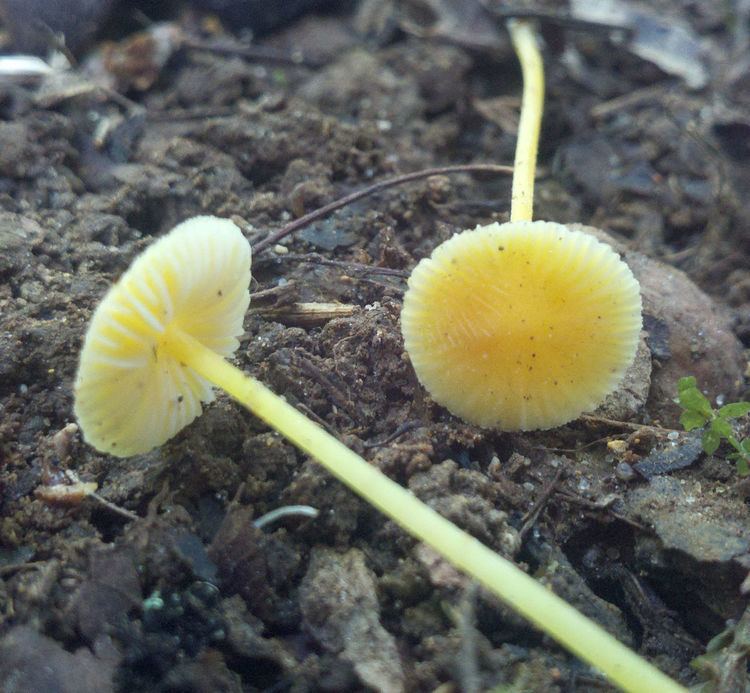Kingdom Fungi Class Agaricomycetes Rank Species | Division Basidiomycota Order Agaricales Genus Mycena | |
 | ||
Similar Mycena atkinsoniana, Mycena overholtsii, Mycena subcaerulea, Mycena citrinomarginata, Mycena olida | ||
Mycena crocea fungi kingdom
Mycena crocea, commonly known as the walnut mycena, is a species of mushroom in the Mycenaceae family. The small, inconsequentially edible mushroom has a bright yellow, conical to broadly convex cap up to 15 mm (0.6 in) in diameter. The stem is tough and thin, up to 20 mm (0.8 in) tall, bright yellow at the top becoming progressively orange towards the base. The gills are adnate, subdistant, and yellowish, becoming lighter in age; and the spore print is white. This mushroom is saprobic and found exclusively on hickory nuts and walnuts in eastern North America. The specific epithet crocea refers to the orange color. The mushroom is commonly known as the "walnut mycena" and was previously and commonly misidentified as Mycena luteopallens.
Contents
- Mycena crocea fungi kingdom
- Description
- Microscopic characteristics
- Similar species
- Habitat and distribution
- References
Description
The cap is vivid yellow, conical to broadly convex cap and up to 15 mm (0.6 in) in diameter. When young the cap tends to be conical or bell-shaped becoming plane or flat at maturity. The margin is striated. The surface is moist, galabrous, and somewhat hygrophanous. The flesh is thin, pallid, and yellowish. Odor and taste are not distinctive. The gills have an adnate attachment and are a pale yellowish color. They are subdistantly spaced. The sturdy stem is 10 to 20 mm (0.4 to 0.8 in) long by 1 to 1.5 mm (0.04 to 0.06 in) thick. The stipe is central, equal (i.e., roughly equal in thickness at the top and bottom), and dark orange to yellowish
Microscopic characteristics
The spores are 7–9 x 4–5 µm, smooth, and elliptical, and weakly amyloid to inamyloid. Pleurocystidia and cheilocystidia are present
Similar species
Mycena strobilinoides is similar to M. crocea, but is found in needle beds under conifers. Atheniella adonis has a fragile stem and a more reddish-pink coloration.
Habitat and distribution
Mycena crocea are found exclusively on hickory nuts and walnuts in eastern North America. It was first described as Marasmius nucicola in 1925 but that name could not be used in Mycena.
